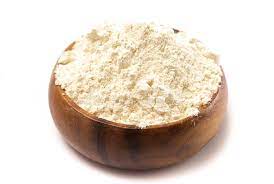Ragi Flour Glycemic Index: A Good Choice For Blood Sugar
- Published on:
- Last update: 07 November 2024

Ragi Flour Glycemic Index: Any diabetic or any other person who wishes to live a normal healthy life should have the ability to control his or her blood sugar. As many begin to pay attention to what they eat as a means to control blood sugar levels ragi and other such ancient cereals have gained acceptance. Such terrific foods are nutritious; they also have low GI and consequently may be used in the prevention of diabetes similarly to being nutritious. But first let us read more about ragi, GI meaning or connection with ragi, all the beneficial factors in offering ragi to diabetic patients along with their condition.
What is Ragi?
Ragi is a finger millet and is considered as one of the most important food grains throughout India and amongst the east African nations. Besides, this grain can be counted healthy carbs since it has no gluten and has high contents of dietary fiber, calcium, and the body’s amount of needed amino acids. The conventional ragi flour made from the small round seeds of the ragi plant is used in the making of cooking plates, porridge, and dosas. It is also a great superfood for such people because of the low glycemic index which enables safe body fat burning and stabilization of blood glucose levels, hence it comes with very beneficial nutritional value too.
What does the Glycemic Index suggest?
The glycaemic index (GI) measures the ability of dietary carbohydrates to raise blood sugar levels by the conversion of carbohydrates into sugars at a particular rate. Every food analyzed, is given a GI score between 0-100, while low GI foods (55 or lower) allow slow release of glucose in the bloodstream. Alternatively, the glycemic index refers to a number of seventy or above will cause the blood sugar level to rise quickly, as soon as the food is consumed. If you have diabetes or you are simply monitoring your blood glucose intake, you are advised to eat foods with low GI number.
Ragi Flour Glycemic Index
Nutritional analysis of ragi shows that its GI value stands at 54 making it a low-GI food grain. This suggests that it does not mostly promote peripheral blood glucose surge. Also, due to the high amount of fibers present in it. This is another contributing factor to its low glycemic property, wherein though calories are consumed, carbohydrates’ digestion, and consequently absorption are delayed. For these reasons, ragi is a good grain source for diabetic patients, or for those who manage their blood sugars well.
Diabetes Management with Ragi
- Improves Blood Sugar Control: Since ragi has a low glycemic index, blood sugar levels do not fluctuate and remain safe for diabetic persons who cannot afford surging high and low blood sugar levels.
- High in Dietary Fiber: Dietary fibre, found abundantly in ragi , makes digestion and absopotion of sugar much slower. As such, the continuous and slow, natural assimilation of glucose in the blood stream also makes it even more beneficial in handling diabetes.
- Rich in Nutrients: Since ragi is rich in calcium, this type of Indian millet contain good doses of iron and it is rich in antioxidants that can helps to control or prevent most complications that are associated with diabetes.
- Supports Weight Management: Fiber makes you feel full, prevents overeating and assists in weight control – a critical element in Diabetes management.
- It is Gluten-Free: The natural gluten-free nature of ragi makes it a safe and healthy option for those suffering from celiac disease or gluten sensitivity.
Checkout: No Added Sugar Millet Muesli
How to Use Ragi in Your Diet
- Ragi Porridge: One can prepare ragi flour by boiling it in water or milk to get a mass like food. Nuts, seeds or fruits are additional food sources recommended to improve the quality of your food as well as add the extra taste.
- Ragi Roti: If you want to prepare nutrient packed flat breads that complements vegetables and curries you have to substitute wheat flour with ragi flour.
- Ragi Dosa: If you would love to have a most appropriate and diabetic approved breakfast instead of the usage of the batter used in making dosas or Indian pancakes, it’s more preferable to use ragi flour.
- Ragi Cookies or Muffins: In case you wish to replace refined flour baked products, then you can bake cookies or muffins using ragi flour.
- Ragi Smoothies: To enrich the nutrient and fibre content of the smoothie, it is advisable to add ragi flour, it will make a quick and filling snack for everyone.
Conclusion
If there’s every person seeking out help in controlling his/her blood sugar tiers and also considers including ragi flour to his/her eating regimen then he/she may additionally discover this exciting. This grain carries high roughage and possesses sluggish glucose freeing feature and as a result is healthy and perfect for the management of diabetes. By consisting of ragi in your weight loss program, you will have the health blessings of it whilst keeping the sugar levels in control.
Is ragi flour good for diabetics?
Yes, ragi flour’s low glycemic index can help diabetics to control their blood sugar levels effectively.
Can I eat ragi every day?
Yes, ragi can be eaten daily in moderation, as it provides essential nutrients like fibre, calcium, and iron, but make sure your diet is balanced.
Who should not eat ragi?
For people having problems with kidneys or having high levels of oxalate, it is advisable that ragi should not be taken since it leads to formation of kidneys stones. Please seek medical advice with questions regarding your health.
Share this post:

